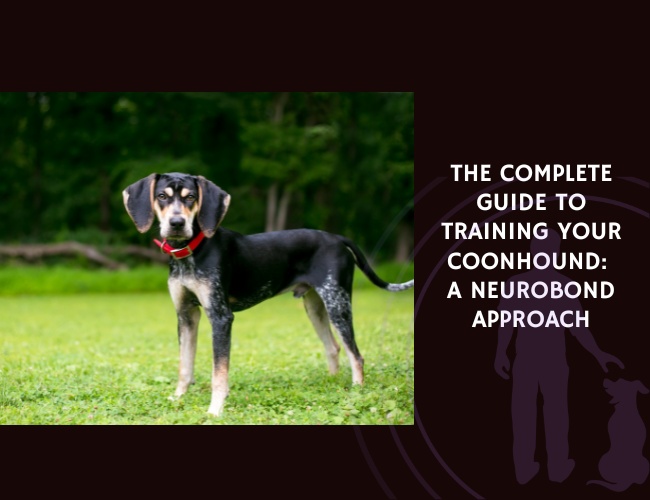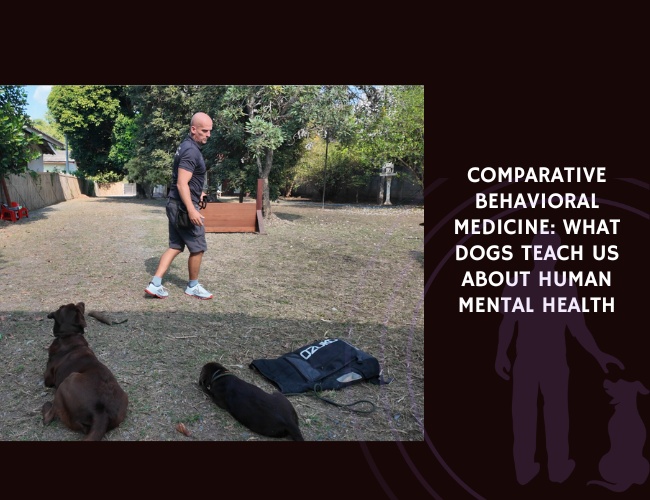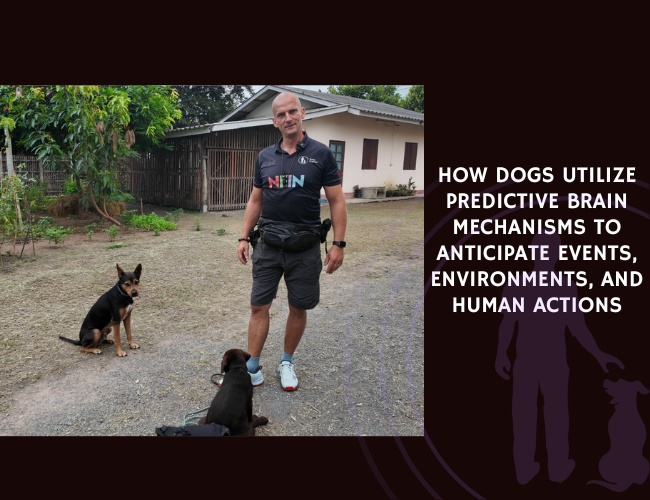Introduction: The Hidden Power of Hydration
Did you know that your dog’s water bowl might be the most underestimated tool in supporting their cognitive sharpness, emotional balance, and overall wellbeing? While we often focus on nutrition, training, and exercise, hydration quietly orchestrates a symphony of physiological processes that directly influence how your furry friend thinks, feels, and behaves. From the spark of neurons firing in their brain to the wag of their tail during play, water is the invisible conductor of your dog’s daily life.
Let us guide you through the fascinating science of canine hydration—not as a dry medical lecture, but as a journey into understanding how something as simple as water can transform your dog’s quality of life. You might notice your pup seeming “off” on hot days or becoming unexpectedly snappy after a long walk. These behaviors often trace back to hydration status, and we’re here to help you decode these signals.
Understanding Your Dog’s Water System
The Biological Orchestra of Hydration
Your dog’s body is approximately 60-70% water—a living ocean where countless biological processes unfold every second. This internal water system isn’t just sitting there; it’s actively transporting nutrients, removing waste, cushioning joints, and perhaps most remarkably, enabling every thought and emotion your dog experiences.
The cellular level story begins with water molecules facilitating chemical reactions that keep your dog alive and thriving. Each cell in your dog’s body relies on proper hydration to maintain its structure and function. When hydration drops even slightly, these cellular processes slow down, affecting everything from muscle contraction to neurotransmitter production.
The systemic impact extends far beyond individual cells. Your dog’s cardiovascular system depends on adequate blood volume—maintained by proper hydration—to deliver oxygen and nutrients throughout the body. The kidneys, those remarkable filtering organs, require sufficient water to flush out toxins effectively. Even your dog’s ability to regulate body temperature through panting relies heavily on having enough water reserves.
Signs Your Dog’s Hydration Status Is Speaking to You
Learning to read your dog’s hydration signals is like learning a new language—one that can prevent serious health issues and behavioral challenges. The classic “skin tent test” (gently pulling up the skin on your dog’s neck and watching how quickly it snaps back) tells only part of the story.
Physical indicators include:
- Dry, sticky gums instead of wet, slippery ones
- Sunken eyes or a dull coat lacking its usual shine
- Decreased skin elasticity (that skin tent we mentioned)
- Concentrated, dark yellow urine
Behavioral whispers often appear before physical signs:
- Increased lethargy or reluctance to play
- Seeking cool surfaces more frequently
- Changes in appetite or treat interest
- Subtle mood shifts you can’t quite explain
Cognitive Function & Mental Clarity
How Water Powers Your Dog’s Brain
The canine brain, despite being smaller than ours, is an incredibly sophisticated organ that depends heavily on proper hydration to function optimally. When we talk about your dog’s intelligence—their ability to learn new tricks, remember where they buried that toy, or respond to your commands—we’re really talking about a water-dependent process.
Neurotransmitter production and function requires adequate hydration to proceed smoothly. These chemical messengers, including serotonin (the happiness molecule) and dopamine (the reward chemical), need water to be synthesized and transmitted between neurons. When your dog is even mildly dehydrated, this communication system slows down, affecting mood, motivation, and learning capacity.
Brain cell volume and function directly correlates with hydration status. Dehydration causes brain cells to shrink slightly, creating gaps in the neural network that can impair cognitive function. This isn’t permanent damage—rehydration quickly restores normal function—but it explains why a dehydrated dog might seem confused or slow to respond.
Reaction Time and Decision Making
You might notice your usually sharp Border Collie missing the frisbee more often on hot days, or your agility champion knocking down poles they normally clear with ease. These performance dips often trace back to hydration-related cognitive slowing.
Processing speed decreases measurably with dehydration. Studies have shown that dogs with optimal hydration respond to commands 15-20% faster than their mildly dehydrated counterparts. This might seem like a small difference, but in working dogs or competitive sports, it’s the margin between success and failure.
Decision-making abilities also suffer when hydration drops. Your dog’s prefrontal cortex—the brain region responsible for executive function and impulse control—is particularly sensitive to hydration changes. This means a thirsty dog might make poor choices, like chasing that squirrel into traffic or failing to respond to your recall command at the dog park.
Memory formation and recall depend on hippocampal function, another water-sensitive brain region. Proper hydration supports both short-term working memory (remembering where you just threw the ball) and long-term memory consolidation (learning and retaining new commands). 🧠
Behavioral Stability & Emotional Regulation
The Hydration-Mood Connection
Have you ever noticed how you feel irritable when you’re thirsty? Your dog experiences similar mood shifts, but they can’t tell you “I need water” in words. Instead, their behavior becomes their voice, and understanding this connection can transform your relationship with your furry friend.
Stress hormone regulation is profoundly influenced by hydration status. When your dog becomes dehydrated, their body releases cortisol—the primary stress hormone—at higher levels. This creates a cascade effect: increased stress leads to increased panting, which leads to more water loss, creating a vicious cycle that can escalate behavioral issues.
Emotional resilience weakens with dehydration. A well-hydrated dog can better cope with environmental stressors like thunderstorms, visitors, or changes in routine. Conversely, a dehydrated dog’s emotional threshold lowers, making them more reactive to triggers that normally wouldn’t bother them.
Aggression and Irritability: The Heat-Hydration Link
The relationship between dehydration, heat stress, and aggressive behavior is one of the most important yet overlooked aspects of canine behavior management. Understanding this connection can prevent incidents and improve your dog’s quality of life.
Physiological stress from dehydration triggers the sympathetic nervous system—the “fight or flight” response. When this system is activated by dehydration, your normally gentle Golden Retriever might snap at another dog over a toy, or your patient Labrador might growl when touched. This isn’t a personality change; it’s a physiological response to internal stress.
Heat stress amplification occurs when dehydration meets high temperatures. Dogs can’t sweat like humans; they rely primarily on panting to cool down. But panting requires water—lots of it. When reserves run low, body temperature rises, creating physical discomfort that manifests as irritability or aggression. Studies have documented significant increases in dog bite incidents during heat waves, with dehydration being a major contributing factor.
Resource guarding intensification often emerges or worsens with dehydration. A thirsty dog might become possessive over water sources, food (which contains moisture), or cool resting spots. This survival instinct kicks in even in well-fed, loved pets because dehydration triggers primitive brain responses.
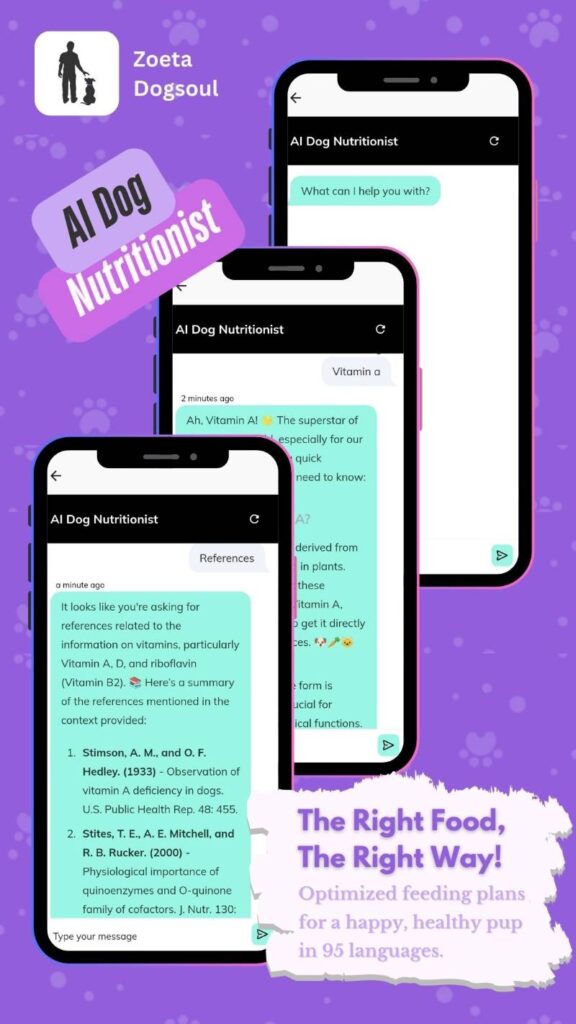
Thermoregulation & Physical Performance
Your Dog’s Cooling System Explained
Unlike humans with our millions of sweat glands, dogs have evolved a different cooling strategy that makes them particularly vulnerable to dehydration. Understanding this system helps you protect your dog from heat-related dangers.
Panting mechanics involve rapid, shallow breathing that evaporates moisture from the tongue, mouth, and upper respiratory tract. This evaporation cools blood vessels near the surface, which then circulate cooler blood throughout the body. However, this process can evaporate up to one cup of water per hour in large dogs—a significant loss that must be replaced.
Limited sweat gland function in dogs (found only in paw pads) means they can’t rely on whole-body sweating for cooling. This evolutionary trade-off—fur for protection versus sweating for cooling—makes hydration even more critical for temperature regulation.
Vasodilation and blood flow changes help dissipate heat, but these processes require adequate blood volume, which depends on hydration. Dehydrated dogs can’t effectively shunt blood to the skin surface for cooling, leading to dangerous overheating even in moderate temperatures.
Exercise Capacity and Recovery
Whether your dog is a weekend warrior at the dog park or a competitive athlete, hydration profoundly impacts their physical performance and recovery.
Muscle function and endurance decline rapidly with dehydration. Water is essential for muscle contraction, nutrient delivery, and waste removal. Even 2% dehydration can reduce endurance by 10-20%, turning your energetic Border Collie into a sluggish shadow of their usual self.
Joint lubrication and flexibility depend on synovial fluid, which is largely water. Dehydrated dogs experience increased joint friction, leading to stiffness, reduced range of motion, and potentially accelerated wear that contributes to arthritis development.
Recovery time extends significantly in dehydrated dogs. The removal of metabolic waste products like lactic acid slows down, leading to prolonged muscle soreness and fatigue. Proper hydration can cut recovery time in half, getting your dog back to their playful self much faster. 🐾
Clear. Calm. Capable.
Water fuels the system. Proper hydration sustains every physical and mental process in your dog, from joint cushioning to neurotransmitter production. Even slight dehydration can ripple through mood, focus, and energy.
The brain drinks first. Hydration keeps neural networks firing efficiently, sharpening reaction time, decision-making, and memory. A well-watered brain processes faster and learns more easily.


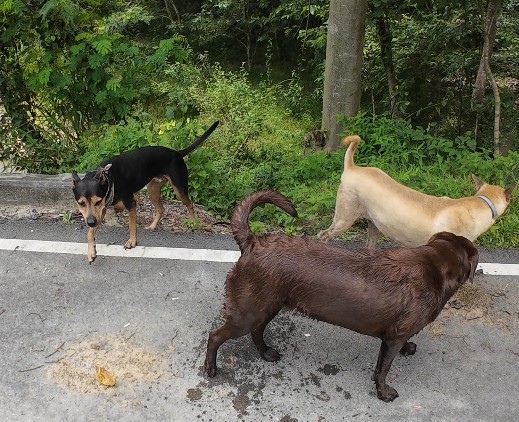
Mood flows with balance. Adequate water intake helps regulate stress hormones, supporting emotional stability. A hydrated dog meets challenges with resilience instead of reactivity.
Electrolyte Balance & Neurological Health
The Mineral Symphony
Water alone isn’t the complete hydration story—electrolytes are the supporting cast that makes the magic happen. These minerals create the electrical gradients necessary for nerve transmission, muscle contraction, and countless other biological processes.
Sodium and chloride work together to maintain fluid balance and blood pressure. When your dog pants excessively, they lose these electrolytes along with water. This loss can lead to weakness, confusion, and in severe cases, seizures.
Potassium is crucial for heart rhythm and muscle function. Dehydration often accompanies potassium depletion, creating a dangerous combination that can cause cardiac arrhythmias and muscle cramping. You might notice your dog’s legs trembling after exercise—this could signal electrolyte imbalance.
Calcium and magnesium support nerve transmission and muscle relaxation. Imbalances can cause everything from muscle twitches to behavioral changes like increased anxiety or hyperactivity.
Maintaining Neurological Stability
The nervous system is essentially an electrical network that depends on proper hydration and electrolyte balance to function correctly. When this balance is disrupted, the effects can be dramatic and concerning.
Nerve conduction velocity decreases with dehydration, slowing reflexes and response times. This explains why dehydrated dogs might seem clumsy or uncoordinated, stumbling on stairs they normally navigate with ease.
Seizure threshold can be lowered by dehydration and electrolyte imbalances, particularly in dogs with epilepsy or other neurological conditions. Maintaining consistent hydration is often a key component of seizure management protocols.
Cognitive fog and confusion emerge as the brain struggles to maintain normal function with insufficient water and minerals. Your normally bright dog might seem lost in familiar environments or fail to recognize routine cues.
Nutritional Strategies for Optimal Hydration
The Great Wet vs. Dry Food Debate
The moisture content of your dog’s diet plays a surprisingly significant role in their overall hydration status. Let’s explore how different feeding strategies impact your dog’s water balance.
Moisture-rich diets (canned food, raw diets, or home-cooked meals) typically contain 70-80% water, providing substantial hydration with every meal. Dogs on these diets often drink less water from their bowl but maintain better overall hydration. This passive hydration can be particularly beneficial for dogs who are reluctant drinkers or senior dogs who forget to drink regularly.
Dry kibble challenges arise from its typically 10% moisture content. Dogs eating exclusively dry food must compensate by drinking significantly more water—something not all dogs do adequately. The convenience of kibble comes with the responsibility of ensuring additional water intake.
Hybrid approaches can offer the best of both worlds. Adding water, bone broth, or wet food toppers to kibble can significantly increase moisture intake while maintaining the dental benefits and convenience of dry food.
Strategic Hydration Through Food
Beyond the basic wet versus dry consideration, there are numerous ways to enhance your dog’s hydration through dietary choices.
Water-rich vegetables and fruits can supplement hydration while providing nutrients. Cucumber (96% water), watermelon (92% water), and zucchini (94% water) make excellent low-calorie treats that boost hydration. Always introduce new foods gradually and ensure they’re safe for dogs.
Bone broth benefits extend beyond simple hydration. This nutrient-rich liquid provides electrolytes, amino acids, and collagen while encouraging water consumption. Many dogs who turn their nose up at plain water will eagerly lap up bone broth.
Ice treats and frozen foods can make hydration fun and enriching. Freezing diluted broth in ice cube trays or Kong toys provides mental stimulation while increasing water intake. This strategy works particularly well for dogs who gulp their water too quickly.

Age-Specific Hydration Needs
Puppies: Building Healthy Hydration Habits
Young dogs have unique hydration needs and challenges that require special attention from their caregivers.
Higher metabolic rates in puppies mean they process water faster than adult dogs. Combined with their smaller body size and higher activity levels, puppies can become dehydrated more quickly than you might expect.
Developing kidney function in puppies under four months isn’t as efficient at concentrating urine, leading to greater water losses. This physiological immaturity means puppies need more frequent water access and closer monitoring.
Learning to self-regulate water intake is a skill puppies must develop. Some puppies drink too much too fast (leading to vomiting), while others get distracted and forget to drink. Establishing routine water breaks helps puppies learn healthy hydration habits.
Senior Dogs: Special Considerations
As dogs age, their hydration needs become more complex, requiring thoughtful adjustments to maintain optimal health.
Decreased thirst sensation is common in older dogs, similar to elderly humans. Your senior dog might not feel thirsty even when dehydrated, making proactive hydration strategies essential.
Kidney function decline means many senior dogs can’t concentrate urine as effectively, leading to increased water loss. This creates a cruel irony: older dogs need more water but often drink less.
Medication interactions can affect hydration status. Many common senior dog medications, including certain heart medications and anti-inflammatories, can increase water needs or affect electrolyte balance.
Mobility challenges might prevent your senior dog from accessing water as easily. Consider placing multiple water stations around your home and ensuring they’re at a comfortable height for arthritic dogs. 🧡
Practical Hydration Management
Creating a Hydration-Friendly Environment
Setting up your home to encourage proper hydration doesn’t require major changes—just thoughtful adjustments that make water accessible and appealing.
Multiple water stations throughout your home ensure your dog never has to go far for a drink. Place bowls in areas where your dog spends time: near their bed, by their favorite window, and definitely near their food.
Bowl selection matters more than you might think. Some dogs prefer ceramic or glass over plastic, which can retain odors. Wide, shallow bowls work better for flat-faced breeds, while deeper bowls suit long-nosed dogs. Elevated bowls can help senior dogs or those with neck problems.
Water quality and temperature influence consumption. Many dogs prefer cool (not cold) water and will drink more if it’s fresh. Change water at least twice daily, and consider filtered water if your tap water has a strong chlorine taste.
Monitoring and Maintaining Hydration
Developing a systematic approach to hydration monitoring helps you catch problems early and maintain optimal health.
Daily observation routine should include checking gum moisture, skin elasticity, and energy levels. Keep a mental or written note of your dog’s normal water consumption—sudden changes often signal health issues.
Weather-based adjustments are crucial for maintaining proper hydration. On hot days, increase water availability by 50% or more. During cold weather, ensure water doesn’t freeze, and consider warming it slightly to encourage consumption.
Activity-based hydration planning means bringing water on walks longer than 20 minutes and offering water breaks every 15-20 minutes during play or exercise. Don’t wait for your dog to seek water—offer it proactively.
Troubleshooting Common Hydration Challenges
Even with the best intentions, you might encounter hydration hurdles. Here’s how to overcome common obstacles.
For reluctant drinkers, try flavoring water with a splash of low-sodium broth, offering ice cubes as treats, or investing in a water fountain—many dogs prefer moving water. Sometimes, simply changing the bowl or location can make a difference.
For excessive drinkers, rule out medical causes with your veterinarian first. Then, consider portion control using timed water dispensers or scheduled water breaks rather than free access, especially if your dog tends to gulp and vomit.
For multi-dog households, ensure each dog has their own water source to prevent resource guarding. Monitor to ensure dominant dogs aren’t preventing others from drinking, and consider separating water stations if competition occurs.
Health Implications & Veterinary Insights
When Dehydration Becomes Dangerous
Understanding the progression from mild dehydration to medical emergency helps you know when to act and when to seek professional help.
Mild dehydration (3-5% fluid loss) causes subtle changes: slightly dry gums, mild lethargy, and concentrated urine. This level is easily corrected with increased water access and rest.
Moderate dehydration (6-9% fluid loss) presents more obvious signs: sunken eyes, prolonged skin tenting, weakness, and possible vomiting. This level requires immediate intervention and possibly veterinary assessment.
Severe dehydration (10%+ fluid loss) is a medical emergency requiring immediate veterinary care. Signs include collapse, rapid heart rate, cool extremities, and altered consciousness. This level requires intravenous fluid therapy.
Chronic Dehydration Consequences
The effects of long-term mild dehydration are often overlooked but can significantly impact your dog’s health and longevity.
Kidney disease acceleration occurs when kidneys consistently work harder to concentrate urine with insufficient water. Over time, this stress contributes to chronic kidney disease, particularly in senior dogs.
Urinary tract problems including crystals, stones, and infections become more likely with chronic mild dehydration. Concentrated urine provides an ideal environment for bacterial growth and mineral precipitation.
Digestive issues like constipation and decreased nutrient absorption can result from insufficient hydration. Water is essential for moving food through the digestive tract and for nutrient transport across intestinal walls.
Conclusion: Your Dog’s Hydration Journey Starts Now
As we’ve explored together, hydration is far more than just filling a water bowl—it’s about understanding and supporting the intricate systems that keep your dog healthy, happy, and behaviorally balanced. From the neurons firing in their brain as they learn a new trick to the muscles powering their evening zoomies, water is the foundation of your dog’s vitality.
You might now look at your dog’s water bowl differently, recognizing it as a powerful tool for supporting cognitive function, emotional stability, and physical health. The seemingly simple act of ensuring proper hydration can prevent behavioral issues, enhance training success, and potentially add years to your dog’s life.
Is your dog getting enough water? Now you have the knowledge to answer this question with confidence. You understand the signs to watch for, the strategies to implement, and the critical connection between hydration and your dog’s overall wellbeing.
Remember, every dog is unique. What works for your neighbor’s Husky might not suit your Chihuahua. Use this guide as a foundation, but always observe your individual dog’s needs and consult with your veterinarian for personalized advice.
Your next steps might include assessing your current hydration setup, introducing moisture-rich foods, or simply being more mindful of your dog’s water intake during different activities and weather conditions. Whatever changes you make, know that you’re taking meaningful steps toward supporting your furry friend’s health and happiness.
The journey to optimal hydration is ongoing, changing with seasons, life stages, and activity levels. But armed with this knowledge, you’re prepared to navigate these changes and provide your dog with the hydration support they need to thrive. Here’s to many more years of tail wags, fetch games, and cuddles with your well-hydrated, happy companion! 🐾


